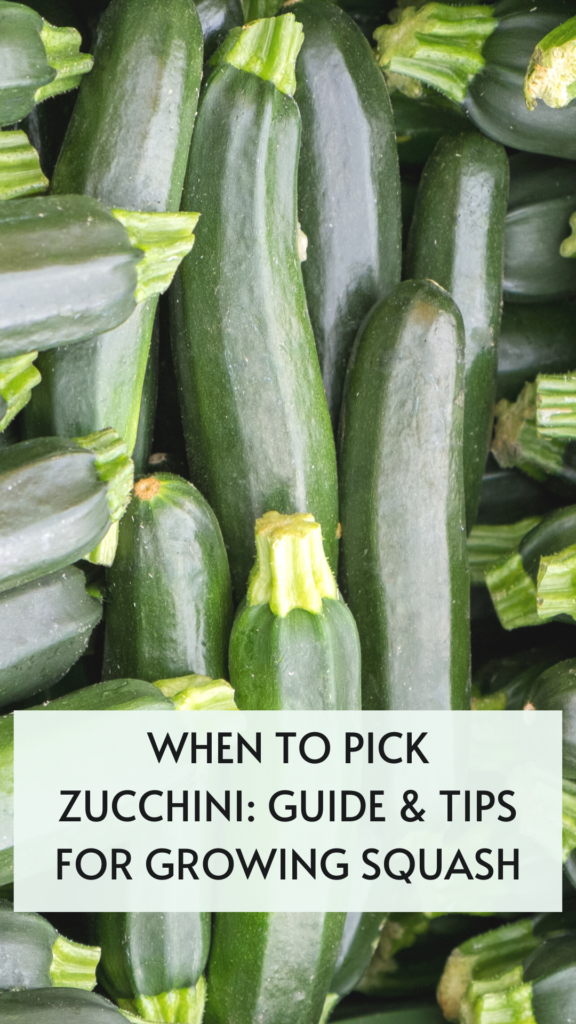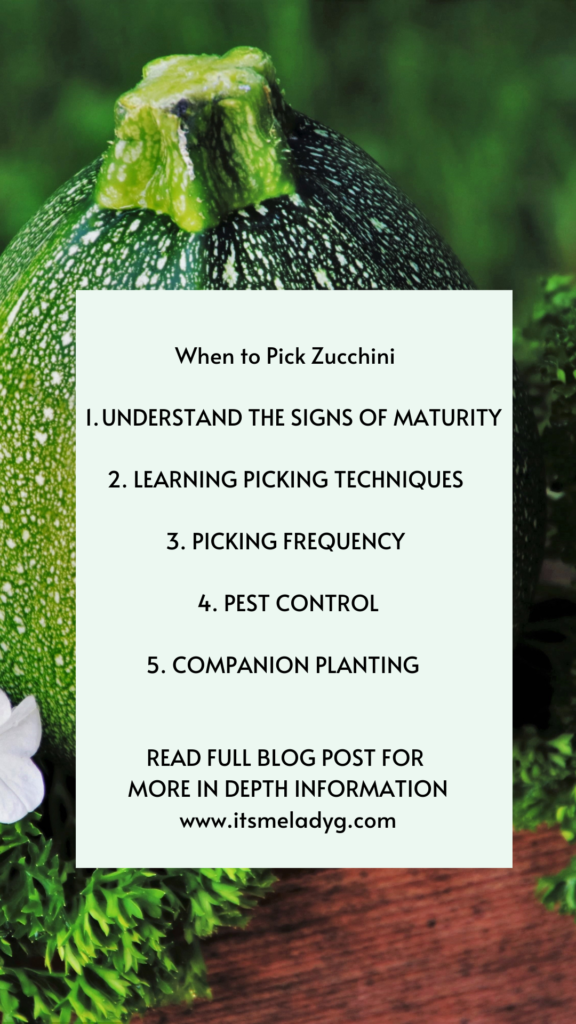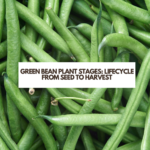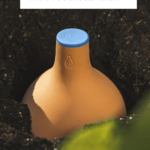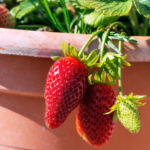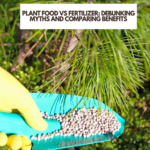Are you trying to figure out when to pick zucchini? Zucchini is a popular summer squash that is easy to grow in a garden or container. Knowing when to pick zucchini is crucial to ensure that the fruits are flavorful and tender. Picking zucchini at the right time can also encourage more fruit production from the zucchini plants.
One way to determine when to pick zucchini is by looking at the size of the fruits. Zucchini should be harvested when they are about 6 to 8 inches long and 2 inches in diameter. If left on the plant for too long, zucchinis can grow to be quite large and can become tough and woody.
Another way to determine when to pick zucchini is by examining the color of the fruits.
Zucchini should be picked when they are still dark green in color and before they start to turn yellow. Yellow zucchinis are still edible, but they tend to be less flavorful and have a softer texture. Picking zucchini squash when they are still firm and dark green will ensure that they have the best flavor and texture.
FTC DISCLOSURE: Some of the links in this post are affiliate links. If you click on them and make a purchase, I will receive a small finder’s fee on the sale. This does not increase your price in any way shape or form. Using these links help support the continuation of this website. All opinions are my own. Thank you in advance.
When to Pick Zucchini
Zucchini is a popular summer squash that is easy to grow and harvest. Knowing the best time to pick zucchini is crucial to ensure that you get the best quality fruits. Here are some tips to help you determine the right time to harvest your zucchini in your vegetable garden:
Signs of Maturity
The maturity of zucchini fruits can be determined by their size, color, and texture. Here are some signs of maturity to look for:
- Size: Zucchini fruits are usually harvested when they are 6 to 8 inches long and 2 inches in diameter. If left on the vine for too long, they can become oversized and tough to eat.
- Color: The color of mature zucchini fruits is usually dark green or yellow. If the fruits are pale or light green, they may not be fully mature yet.
- Texture: Mature zucchini fruits should be firm and have a smooth skin. If they are soft or wrinkled, they may be overripe.
It is important to note that the maturity of zucchini fruits can be affected by growing conditions such as temperature, moisture, and soil fertility. Therefore, it is recommended to check the fruits regularly and harvest them as soon as they are mature.
If you see yellow flowers on the end of the zucchini it is not yet ready to harvest. These are the female flowers. You will also see other parts of the plant which are zucchini blossoms. Those are the male zucchini flowers.
Harvesting Zucchini
When harvesting zucchini, use a sharp knife or pruning shears to cut the fruit from the vine. Be careful not to damage the stem or leaves of the plant. It is also important to handle the fruits gently to avoid bruising or crushing them when you harvest zucchini.
Once harvested, zucchini can be stored in the refrigerator for up to a week. They can be used in a variety of dishes such as stir-fries, salads, and soups.Eating these tender fruits when they are dark green color is the ideal time. Young zucchinis taste different than ones that are older.
How to Pick Zucchini
Tools to Use
To pick zucchini, one needs a sharp knife or scissors. A dull knife or scissors can damage the plant and leave it open to infection. It is also important to have a basket or bag to hold the zucchini after picking. Figuring out the right tools to use is easy.
Picking Technique
There are two main ways to pick zucchini: twisting or cutting. To twist, simply grab the zucchini at the base and twist it gently until it breaks off the plant. This method works best for smaller zucchinis.
For larger zucchinis, it is better to use a knife or scissors to cut the stem. Be sure to cut the stem as close to the zucchini as possible without damaging the plant. You want to grab them at the base of the plant.
When picking zucchini, it is important to look for the following signs of ripeness:
- Size: Zucchinis should be around 6-8 inches in length and 2 inches in diameter.
- Color: The skin should be dark green and shiny.
- Texture: The skin should be firm to the touch.
If the zucchini is too large or too old, it will be tough and bitter. It is best to pick zucchinis when they are young and tender.
In conclusion, picking zucchini is a simple process that requires a sharp knife or scissors and a basket or bag to hold the zucchinis. By following the proper picking technique and looking for signs of ripeness, one can enjoy fresh and delicious zucchinis all summer long.
Harvesting Zucchini Plants
Picking Frequency
Zucchini plants produce fruit rapidly, and it is essential to harvest them frequently to maintain the plant’s health and productivity. The ideal size for harvesting zucchini is when they are around six to eight inches long and two inches in diameter.
At this stage, the fruit is tender and has a mild flavor. If left on the plant for too long, the zucchini will become tough and bitter, making them unsuitable for consumption.If you continue to pick the fruits, you can end up with a large harvest by the end of the summer.
Pest Control
One of the most common pests that affect zucchini plants is the squash bug. These pests can cause severe damage to the plant, leading to a reduced harvest. To control squash bugs, it is essential to check the plants regularly and remove any eggs or nymphs that are found. You can use a neem oil spray as.a great way to reduce pests. Additionally, planting companion plants such as marigolds and nasturtiums can help repel pests and attract beneficial insects such as ladybugs and lacewings.
Powdery Mildew
Zucchini plants also commonly get a white powdery substance on their large leaves from the main plant. To avoid this happening to your squash plants, make sure not to plant them too closely to each other. This will also help make it easier during harvest time and produce high yields of zucchini crops. Zucchini will continue to produce during the entire growing season.
Companion Planting
Companion planting is an effective way to improve the health and productivity of zucchini plants. Some plants that make good companions for zucchini include:
- Marigolds: repel pests and attract beneficial insects
- Nasturtiums: repel pests and add color to the garden
- Radishes: help break up soil and deter pests
- Beans: add nitrogen to the soil and provide shade for zucchini plants
Storing Zucchini
When it comes to storing zucchini, there are a few different options to consider. You may end up with a lot of zucchini produce by early summer if all the conditions are right. Depending on how you plan to use the zucchini, you may want to store it in the refrigerator, freeze it for later use, or even use it to make zucchini bread.
Refrigeration
If you plan to use your zucchini within the next few days, storing it in the refrigerator is a good option. To do so, wrap the zucchini tightly in plastic wrap or place it in a plastic bag and store it in the vegetable drawer of your refrigerator. Be sure to use the zucchini within 3-5 days for best quality. You may want to wrap the cut zucchini in paper towels at first to soak up some of the moisture that is released.
Freezing
If you have more zucchini than you can use within a few days, freezing is a great option. To freeze zucchini, start by washing and slicing it into rounds or cubes. Blanch the zucchini in boiling water for 1-2 minutes, then immediately transfer it to an ice bath to stop the cooking process. Drain the zucchini and pat it dry, then place it in a freezer-safe container or bag and store it in the freezer for up to 8 months.
Zucchini Bread
If you’re looking for a way to use up extra zucchini, making zucchini bread is a great option. To make zucchini bread, start by shredding the zucchini and squeezing out any excess moisture. Mix the shredded zucchini with flour, sugar, eggs, and other ingredients to make a batter, then bake in a loaf pan until golden brown. Zucchini bread can be stored at room temperature for up to 3 days, or in the refrigerator for up to a week. This might be my favorite way to use zucchini.
Overall, there are several ways to store zucchini depending on your needs. Whether you choose to refrigerate it for short-term use, freeze it for later, or use it to make zucchini bread, you can enjoy the benefits of this versatile vegetable all year round. You can also make zucchini cakes.
Zucchini Varieties
Zucchini is a popular summer squash that comes in many different varieties. Each variety has its own unique flavor, texture, and production characteristics. In this section, we will explore some of the most common zucchini varieties and their key features.
Flavor and Texture
Zucchini varieties can vary greatly in terms of their flavor and texture. Some varieties are sweeter and more tender, while others are more firm and savory. Here are a few popular zucchini varieties and their flavor and texture characteristics:
- Black Beauty: This variety has a dark green skin and a sweet, tender flesh. This is the most common type of zucchini.
- Costata Romanesco: This variety has a ribbed skin and a nutty, firm flesh.
- Greyzini: This variety has a gray-green skin and a slightly sweet, firm flesh.
- Yellow Crookneck: This variety has a yellow skin and a sweet, tender flesh. These are also commonly known as yellow squash.
Production
When choosing a zucchini variety, it is important to consider its production characteristics. Some varieties are more prolific than others, meaning they will produce more fruit over a longer period of time. Here are a few zucchini varieties that are known for their high production:
- Ambassador: This variety is known for its high yield and disease resistance.
- Gold Rush: This variety produces bright yellow fruit and has a long harvest period.
- Raven: This variety is known for its dark green fruit and high yield.
Companion Plants
Zucchini can benefit from being planted alongside certain companion plants. Companion plants can help deter pests, improve soil health, and provide other benefits. Here are a few companion plants that work well with zucchini:
- Nasturtiums: These flowers can help repel squash bugs and attract beneficial insects.
- Marigolds: These flowers can help repel nematodes and other pests.
- Beans: These plants can help fix nitrogen in the soil, which can benefit zucchini growth.
Overall, there are many zucchini varieties to choose from, each with its own unique characteristics. When selecting a zucchini variety, consider factors such as flavor, texture, production, and companion plants to find the variety that best suits your needs.





